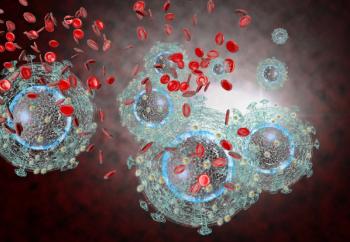
Poster Presentations at CROI 2014: A Primary Care Perspective
Useful details here about HIV and age-related issues, sexual dysfunction, heart disease, and end-organ damage.
Count them: there were 897 posters presented at CROI 2014. Space precludes reporting on all of them, even though I scrutinized every single one to find a handful that would be of particular interest to readers of ConsultantLive.
Viewing the posters, especially in “off-hours” when relatively few other attendees are in the poster viewing areas, is a truly enjoyable experience. In addition, doing so is a highly efficient way of acquiring new information or at least getting a sense of the newer developments and advances in a wide variety of areas. Nevertheless, what follows is certain to be a non-representative, highly biased, selection of topics.
Tenofovir and kidney injury. A great place to start is with “A Chronic Kidney Disease Risk Score To Determine Tenofovir Safety Among HIV+ Male Veterans.”1 Tenofovir is the most widely prescribed antiretroviral drug in the US, either as a stand-alone product or part of several different fixed-dose, co-formulated products. It also is a known risk factor for acute kidney injury. The authors have developed a “score” which they showed predicts 5-year risk of kidney injury in male veterans taking or not taking tenofovir. Age over 55 years, hypertension, and diabetes were substantial contributors to risk prediction. Overall, the 5-year event rate was 7.7% in tenofovir users. This compares with 3.8% in non-users.
Geriatric-related concerns in the HIV population. Several posters discussed the issue of frailty.2-4 As the HIV-infected population ages, geriatric-related concerns become more prominent. Indeed, premature aging in HIV-infected persons is a related area of active research. Frailty appears to be increased in the HIV-infected elderly, HIV-infected injection drug users, and those with elevated levels of interleukin-6 (IL-6). Surprisingly, not only did “brisk walking” (eg, 3 sessions of 60 minutes of walking at 65% to 75% of maximum heart rate) improve aerobic fitness and quality of life measures, it also was associated with improvement (lowering) of various markers of inflammation, including IL-6 and d-dimer levels.
Sexual dysfunction. Loss of libido, or complaints of erectile dysfunction, are common in HIV-infected males, especially as they age. Consequently, it was fascinating to learn that free testosterone (FT) levels decreased at the same rate over a 6-year interval in older (age greater than 45 years) HIV-infected compared with non–HIV-infected men.5 However, there were some differences: morning FT levels decreased more in HIV-infected men than in non–HIV-infected men, even though afternoon/evening FT levels did not differ by HIV status. Whether exogenous testosterone is of any benefit in either group was not studied.
CD4+ lymphocyte counts: a boost from statins? An occasional observation among those who care for HIV-infected persons is that CD4+ lymphocyte counts do not increase (or even decrease), despite maximal suppression of HIV RNA. Multiple studies have shown that no particular antiretroviral drug, nor any particular combination of antiretroviral drugs, is any more effective than what is considered “standard” or preferred. Ongoing studies within the ACTG, as well as data presented in Poster 308,6 suggest that the addition of a statin was associated with increased gains in CD4+ lymphocytes. Other data suggested that the increased observed increase in CD4+ lymphocytes may be due to the anti-inflammatory effect of the statins on lowering various proinflammatory cytokines.7
HIV and CVD. As mentioned in a
HIV and d-dimer levels. Multiple studies have shown that d-dimer levels predict mortality risk in persons with HIV infection. The proposed mechanism is via activation of the coagulation system, a theory that has been supported anecdotally by the observation that many HIV-infected persons appear to be at increased risk for thromboembolic events, as a possible result of a chronic “hypercoaguable” state. Data presented by Jason Baker9 showed that activation of the extrinsic coagulation pathway, with the concomitant increase in levels of clotting factors V and VIII, were associated with higher levels of d-dimer and greater mortality rates.
HIV and end-organ damage. While quite different in subject matter, many of these poster presentations suggest that ongoing HIV replication triggers a state of immune activation, leading to proinflammatory cytokine excess, and subsequent end-organ damage. Other poster presentations suggest that certain antiretrovirals (eg, tenofovir) also contribute directly to end-organ damage.
The bottom line. HIV and its associated complications remains a challenge to manage-and is a disease better prevented than treated.
References:
References
1. Scherzer R, Gandhi M, Estrella M, et al. A chronic kidney disease risk score to determine tenofovir safety among HIV+ male veterans. Abstract 798. CROI 2014. March 2014, Boston.
2. Piggott DA, Varadhan R, Mehta SH, et al. Frailty, inflammation and mortality among aging HIV-infected and at-risk injection drug users. Abstract 762. CROI 2014. March 2014, Boston.
3. Longo V, Bonato M, Bossolasco S, et al. Brisk walking improves inflammatory markers in cART-treated patients. Abstract 763. CROI 2014. March 2014, Boston.
4.Physical Function Impairment On Quality of Life Among Persons Aging With HIV Infection. Erlandson KM, Allshouse AA, Jankowski CM, et al. Abstract 767. CROI 2014, March 2014, Boston.
5. Slama L, Jacobson LP, Li X, et al. Longitudinal changes in free testosterone among older HIV-infected and HIV-uninfected men. Abstract 754. CROI 2014. March 2014, Boston.
6. Drechsler HJ, Cutrell J, Carvour M, et al. Statins use is associated with greater CD4 gains in HIV-infected US veterans. Abstract 305. CROI 2014. March 2014, Boston.
7. Funderburg N, Clagett B, Jiang Y, et al. Rosuvastatin reduces immune activation and inflammation in treated HIV infection. Abstract 335. CROI 2014. March 2014, Boston.
8. Marcus JL, Leyden WA, Chao CR, et al. HIV Infection and immunodeficiency as risk factors for ischemic stroke. Abstract 741. CROI 2014. March 2014, Boston.
Newsletter
Enhance your clinical practice with the Patient Care newsletter, offering the latest evidence-based guidelines, diagnostic insights, and treatment strategies for primary care physicians.






















































































































































































































































































